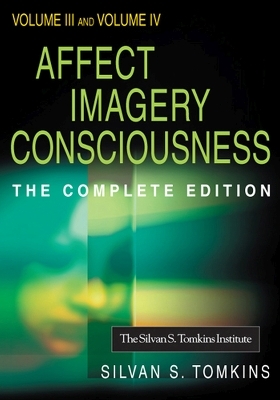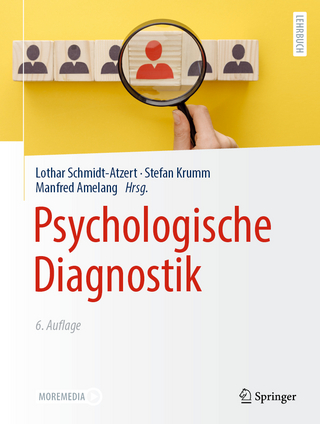
Affect Imagery Consciousness v. 2
Springer Publishing Co Inc (Verlag)
978-0-8261-4406-5 (ISBN)
Silvan S. Tomkins was indeed one of history's most original psychologists, a tireless scientist who contributed much to that discipline. ""Affect Imagery Consciousness"" was his life's work and consumed him from the mid 1950s through the end of his life in 1991. With this book, he took on an enormous task; he sought to explore emotions, or affects, why we had them, why we paid attention to them, and how they motivated us to respond to situations in our daily lives.Tomkins believed that ""all life is 'affective life,' all behavior, thought, planning, wishing, doing...there is no moment when we are free from affect, no situation in which affect is unimportant."" He identified nine innate affects that humans possess, and from these, discovered a set of four highly specific behavioral requirements known as ""The Tomkins Blueprint for Individual Mental Health"", which states: as humans, we are motivated to savor and maximize positive affect. We enjoy what feels good and do what we can to find and maintain more of it; we are inherently biased to minimize negative affect; the system works best when we express all of our affects; and, anything that increases our power to accomplish these goals is good for mental health, anything that reduces this power is bad for mental health.These nine affects and this blueprint serve as a foundation for much of Tomkins' research and theories discussed in the volumes of ""Affect Imagery Consciousness"".
Silvan S. Tomkins, PhD, (1911-1991) was one of the most influential theorists of 20th-century psychology and is generally considered the founder of modern affective science. From 1947 until his retirement in 1975, Tomkins taught at Princeton University, The CUNY Graduate Center, and Rutgers University.
Prologue by Donald L. Nathanson, MD
VOLUME III—THE NEGATIVE AFFECTS: ANGER AND FEAR
Dedication
Biography
Preface
Part I: Modifications, Clarifications, and Developments
in Affect Theory
24. Affect As Analogic Amplification: Modifications and Clarifications
in Theory
25. Affect and Cognition: “Reasons” As Coincidental Causes of
Affect Evocation
26. Affect and Cognition: Cognition As Central and Causal in
Psychological Magnification
Part II: Anger and Fear
27. Anger and Its Innate Activation
28. The Magnification of Anger
29. The Differential Magnification of Anger
30. The Socialization of Anger
31. Ideology and Anger
32. Anger-Management and Anger-Control Scripts
33. Anger in Affluence and Damage-Repair Scripts
34. Anger in Depressive Scripts
35. Anger in Disgust-Decontamination Scripts
36. Antitoxic Anger-Avoidance Scripts
37. Antitoxic, Anger-Driven Expressive and Counteractive Scripts
38. Antitoxic, Anger-Driven Power and Recasting Scripts
39. Antitoxic, Anger-Driven Destructive Scripts
40. Fear and Its Socialization
41. Fear Magnification and Fear-Based Scripts
Epilogue
VOLUME IV—COGNITION: DUPLICATION AND
TRANSFORMATION OF INFORMATION
Dedication
Preface
Acknowledgments
42. Introduction to the Second Half of Human Being Theory
Part I: Cognition
43. Cognition: What Is It and Where Is It ?
44. Varieties of Media Mechanisms: A Bottom-Up Perspective
45. Varieties of Information Gain and Script Formation: A Top-Down
Perspective
Part II: Memory
46. Memory: Defining Characteristics
47. The Storage and Retrieval of Imagery: The Nature of These
Processes
48. The Possibility and Probability of Retrieving Stored
Information
49. Implications for Human Development: Continuity and
Discontinuity
50. Factors Governing the Activation of Early Memories
Part III: Perception
51. Perception: Defining Characteristics—Central Matching
of Imagery
52. The Lower Senses
53. The Higher Senses
Part IV: Other Centrally Controlled Duplicating
Mechanisms
54. The Central Assembly: The Limited Channel of Consciousness
55. The Feedback Mechanism: Consciousness, The Image, and
the Motoric
Epilogue: Rate Change and Dimensionality as Fundamental
Axiom
References—Volumes III and IV
Author Index I-1
Subject Index I-5
| Erscheint lt. Verlag | 15.2.2008 |
|---|---|
| Zusatzinfo | illustrations |
| Verlagsort | New York |
| Sprache | englisch |
| Gewicht | 1338 g |
| Themenwelt | Geisteswissenschaften ► Psychologie |
| ISBN-10 | 0-8261-4406-3 / 0826144063 |
| ISBN-13 | 978-0-8261-4406-5 / 9780826144065 |
| Zustand | Neuware |
| Haben Sie eine Frage zum Produkt? |
aus dem Bereich


